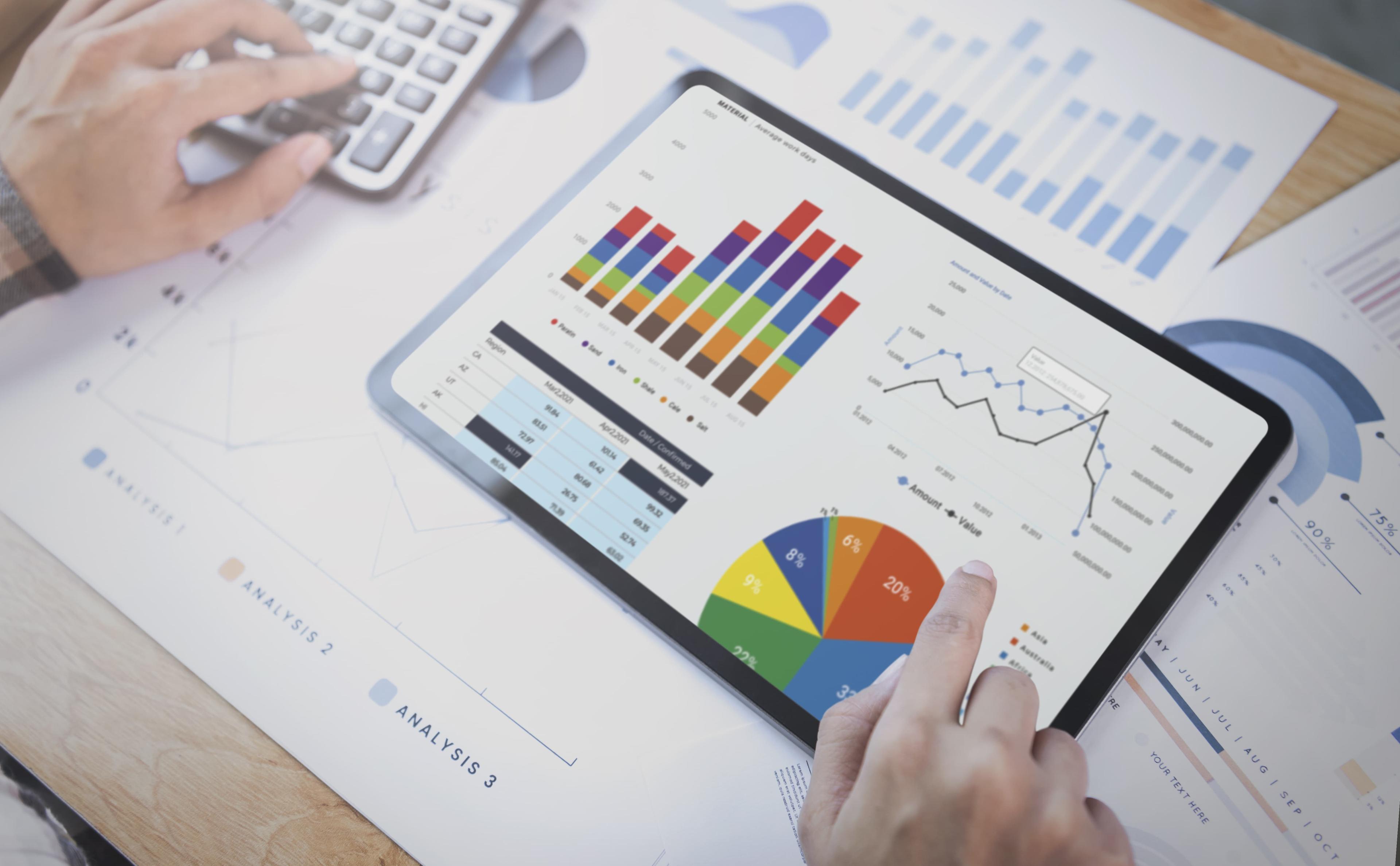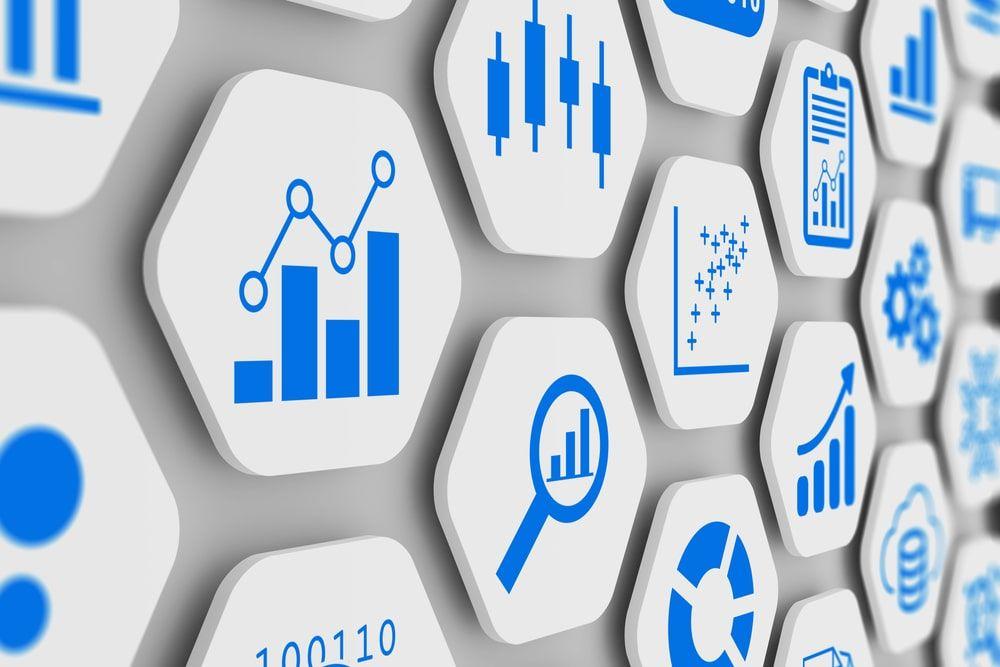How Machine Learning Can Boost Your Predictive Analytics
Every business seeks to grow. But only a handful of companies that successfully actualize this vision do so through data-based decision making. And to make these informed decisions, companies have been using machine learning-based predictive analytics.
Predictive analytics is predicting future outcomes based on historical and current data. It uses various statistical and data modeling techniques to analyze past data, identify trends, and help make informed business decisions. While previously, machine learning and predictive analytics were viewed as two entirely different and unrelated concepts, the increasing demands of effective data analytics have brought machine learning algorithms to intertwine with predictive analytics. Today, predictive analytics extensively uses machine learning for data modeling due to its ability to accurately process vast amounts of data and recognize patterns.
In this piece, we’ll learn in detail how machine learning analytics is helping companies predict the future and make informed decisions.
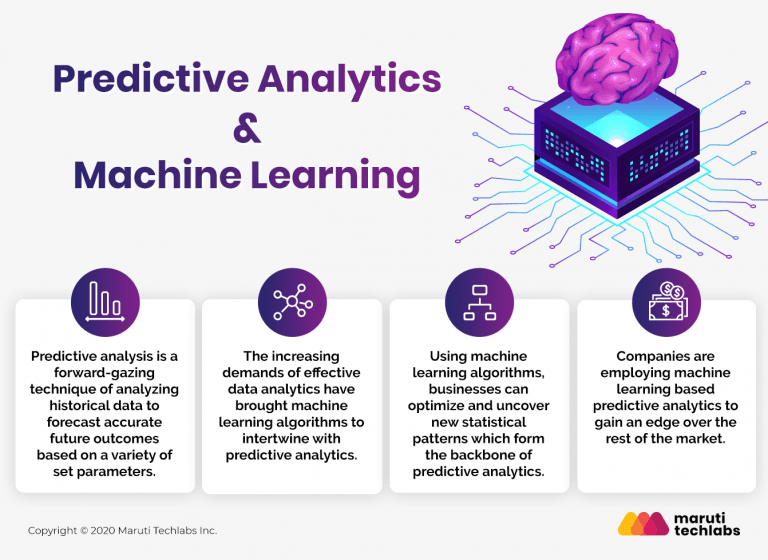
Forms of Data Analysis
An organization with massive data can begin analytics before beginning data scientists should make sure that predictive analytics fulfills their business goals and is appropriate for the big data environment.
Let’s take a quick look at the three types of analytics –
Descriptive analytics – It is the primary form of analytics that aggregates big data and provides useful insights into the past.
Predictive analytics – Next step in data reduction; It uses various statistical modeling and machine learning techniques to analyze past data and predict the future outcomes
Prescriptive analytics – New form of analytics that uses a combination of business rules, machine learning, and computational modeling to recommend the best course of action for any pre-specified outcome.
Neural networks – Building blocks of Data Analysis
The neural network is a system of hardware and software mimicked after the central nervous system of humans, to estimate functions that depend on vast amounts of unknown inputs. Neural networks are specified by three things – architecture, activity rule, and learning rule.
According to Kaz Sato, Staff Developer Advocate at Google Cloud Platform, “A neural network is a function that learns the expected output for a given input from training datasets”. A neural network is an interconnected group of nodes. Each processing node has its small sphere of knowledge, including what it has seen and any rules it was initially programmed with or developed for itself.
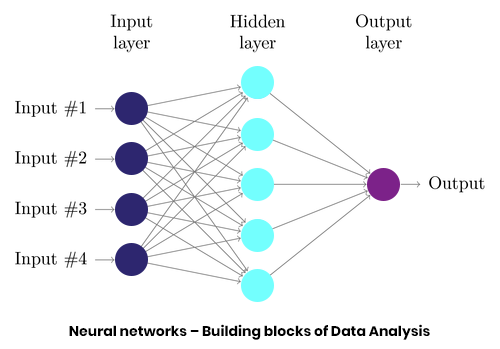
In short neural networks are adaptive and modify themselves as they learn from subsequent inputs. For example, below is a representation of a neural network that performs image recognition for ‘humans’. The system has been trained with a lot of samples of human and non-human images. The resulting network works as a function that takes an image as input and outputs label human or non-human.
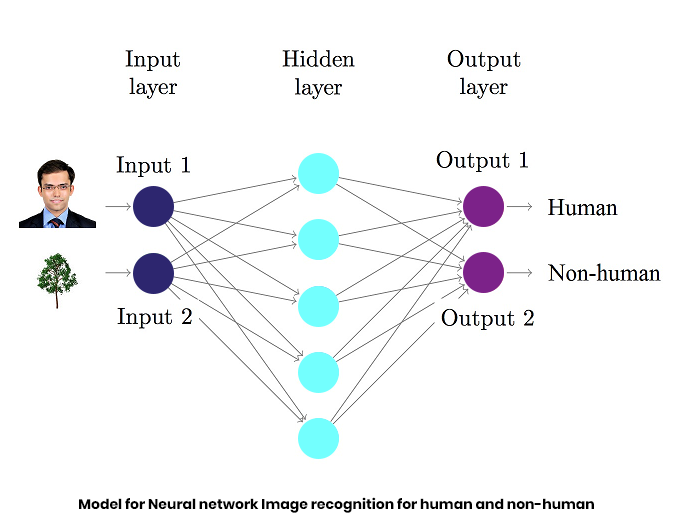
Building predictive capabilities using Machine Learning and Artificial Intelligence
Let’s implement what we have learned about neural networks in an everyday predictive example. For example, we want to model a neural network for the banking system that predicts debtor risk. For such a problem, we have to build a recurrent neural network that can model patterns over time. RNN will require colossal memory and a large quantity of input data. The neural system will take data sets of previous debtors.
Input variables can be age, income, current debt, etc. and provide the risk factor for the debtor. Each time we ask our neural network for an answer, we also save a set of our intermediate calculations and use them the next time as part of our input. That way, our model will adjust its predictions based on the data that it has seen recently.

Uses cases for Machine Learning based predictive analytics
As machine learning and artificial intelligence landscape evolve, predictive analytics is finding its way into more business use cases. Coupled with Business intelligence (BI) tools such as Domo and Tableau, business executives can make sense of big data.
Elucidated below are some of the use cases of machine learning-based predictive analytics:
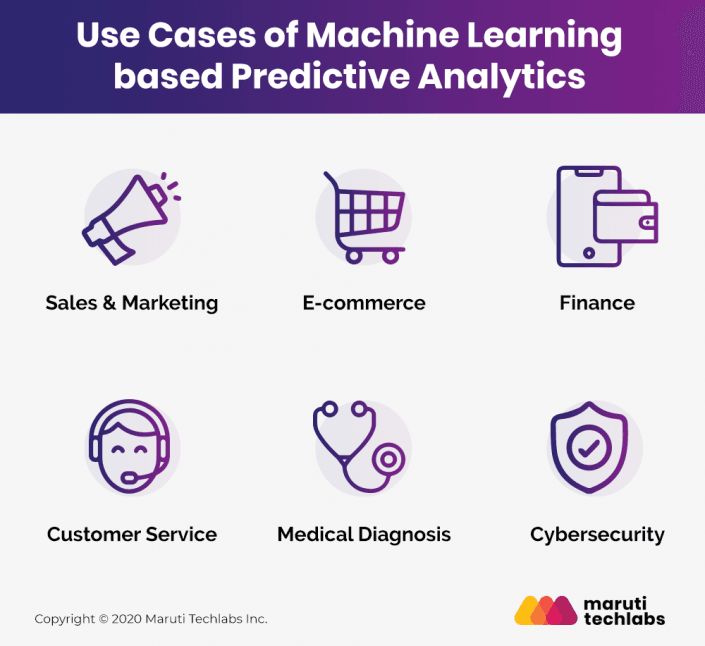
1. E-commerce –
Predictive analytics backed up with machine learning algorithms can help retailers understand customer’s behavior and preferences. By studying browsing patterns and click-through rates of particular products, e-commerce companies can effectively place product recommendations and offer to maximize sales.
Personalized recommendations and reminders can also help retailers retain their customers, thus helping in creating a loyal customer base. Machine learning predictive analytics also makes it easier to manage supply chain processes. Using predictive algorithms, retailers can better manage inventory, avoid out-of-stock scenarios, and optimize logistics and warehousing.
2. Customer service –
Almost every application of predictive analytics has the primary goal of providing superior customer service. The insights provided by predictive analytics help in customer segmentation. Segmenting customers based on their response and purchase patterns can further help businesses in creating marketing strategies tailored to each segment’s characteristics.
Machine learning-based predictive analytics also helps businesses identify customers who are on the verge of leaving. Such insights empower businesses to design packages and content which suit the customers’ needs, thus helping in retaining customers and attracting newer ones.
3. Medical Diagnosis –
Predictive analytics has a large scope of application in the field of healthcare and medicine. By training algorithms with large and varied data sets, patient symptoms can be studied better. This can further help in providing a faster and more accurate diagnosis.
Machine learning predictive analytics streamlines large sets of unstructured data and derives insights from them. This improves operational efficiency and facilitates better management in the health care sector. For example, hospitals can plan if surge issues leading to the bed and staff shortages can be predicted. Such insights and predictions enable hospitals to provide the best patient care.
4. Sales and Marketing –
There are many examples of machine learning in B2B marketing. One of the most common use cases is identifying and acquiring prospects with attributes similar to existing customers. ML-based predictive analytics can also prioritize known prospects, leads, and accounts based on their likelihood to take action.
Many companies have been using predictive lead-scoring algorithms based on intricate data sets to radically improve their lead conversion rates. Machine learning predictive analytics creates a 360-degree view of the prospective customer by combining historical data points of customer behavior with market trends. Using predictive algorithms has helped companies achieve higher targets and streamlined their sales and marketing activities into a data-based undertaking instead of simply taking a shot in the dark.
5. Financial Services –
Finance companies heavily rely on intelligent algorithms and analytics to detect and prevent fraudulent transactions and activities. Predictive analytics scans historical datasets and identifies risk areas so that companies can make decisions to prevent/mitigate risks.
Machine learning-based predictive analytics also helps companies prepare revenue projections so that goals, objectives, cash flows, probable issues, etc. can be planned aptly and well-ahead in advance. Predicting the future using predictive analytics also helps companies keep unexpected losses at bay. Demand forecasting can help in predicting the sales cycle, and as a result, companies can place and market-specific products to increase profitability.
6. Cybersecurity –
Cyber attacks can strike any organization at any time. Thanks to advanced statistical techniques like predictive analytics, cyber-attacks can now be predicted and prevented. Machine learning algorithms process unimaginable amounts of both structured and unstructured data in a short period. Being able to analyze traffic in real-time to track unusual patterns constantly helps companies ward off attacks before any potential harm is done.
Machine learning predictive analytics automates the process of collating data and compiling them into reports and actionable insights. The synergy between custom AI software development and machine learning-based predictive analytics can revolutionize the way companies approach data-driven decision-making and take away the burden of your IT professionals, enabling them to focus on designing strategies to protect the system. This also reduces the scope of human error stemming from having to process massive volumes of data.
To Sum It Up
Organizations and technology companies are employing machine learning-based predictive analytics to gain an edge over the rest of the market. Machine learning advancements such as neural networks and deep learning algorithms can discover hidden patterns in unstructured data sets and uncover new information. But building a comprehensive data analysis and predictive analytics strategy requires big data and progressive IT systems.
At Maruti Techlabs, we have worked extensively to implement advanced analytics using machine learning and artificial intelligence algorithms. We help our clients identify new opportunities, hidden threats, and understand their customer needs better. Unlock the true potential of your data with us. Simply drop us a note here, and we’ll get in touch with you!







